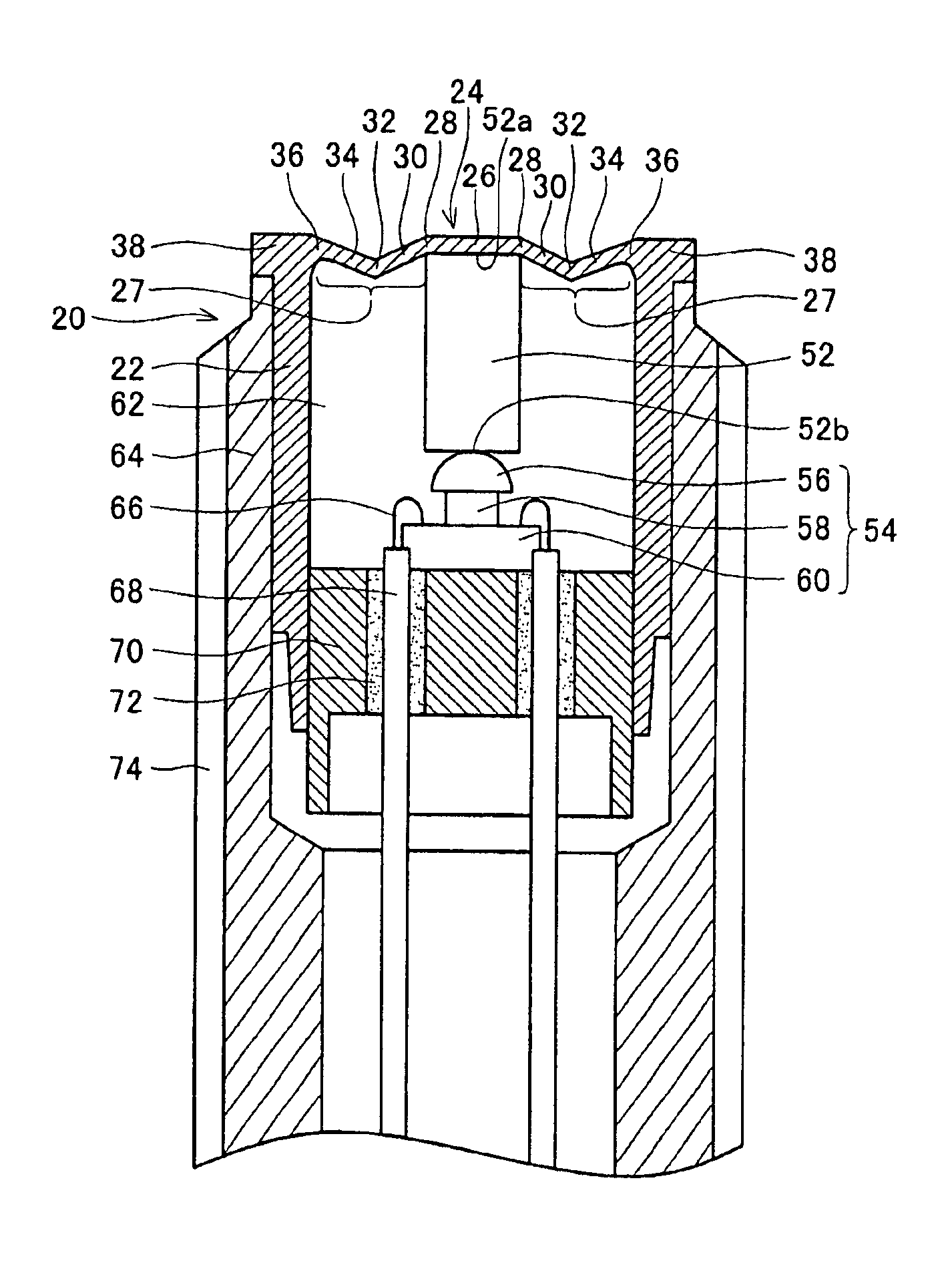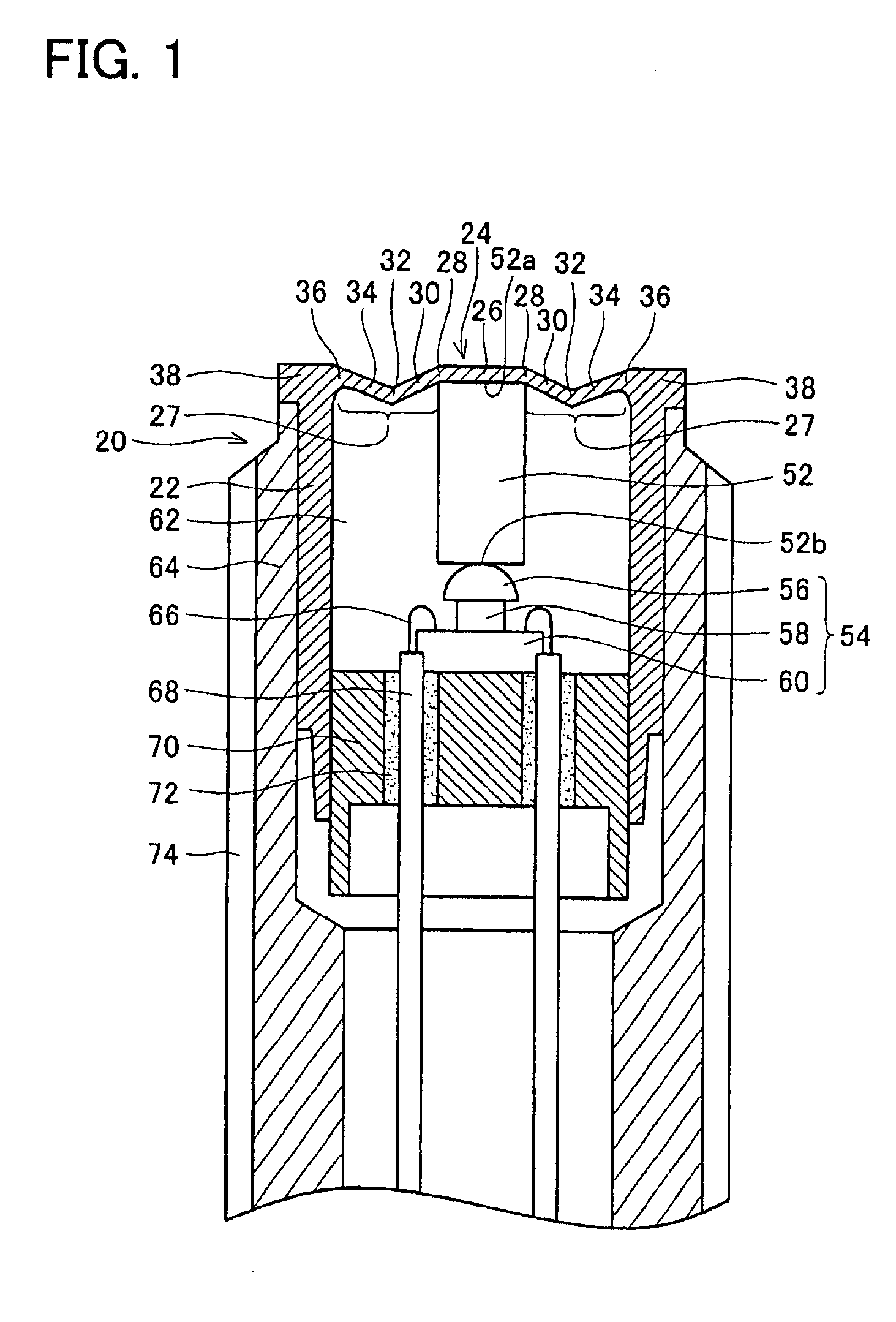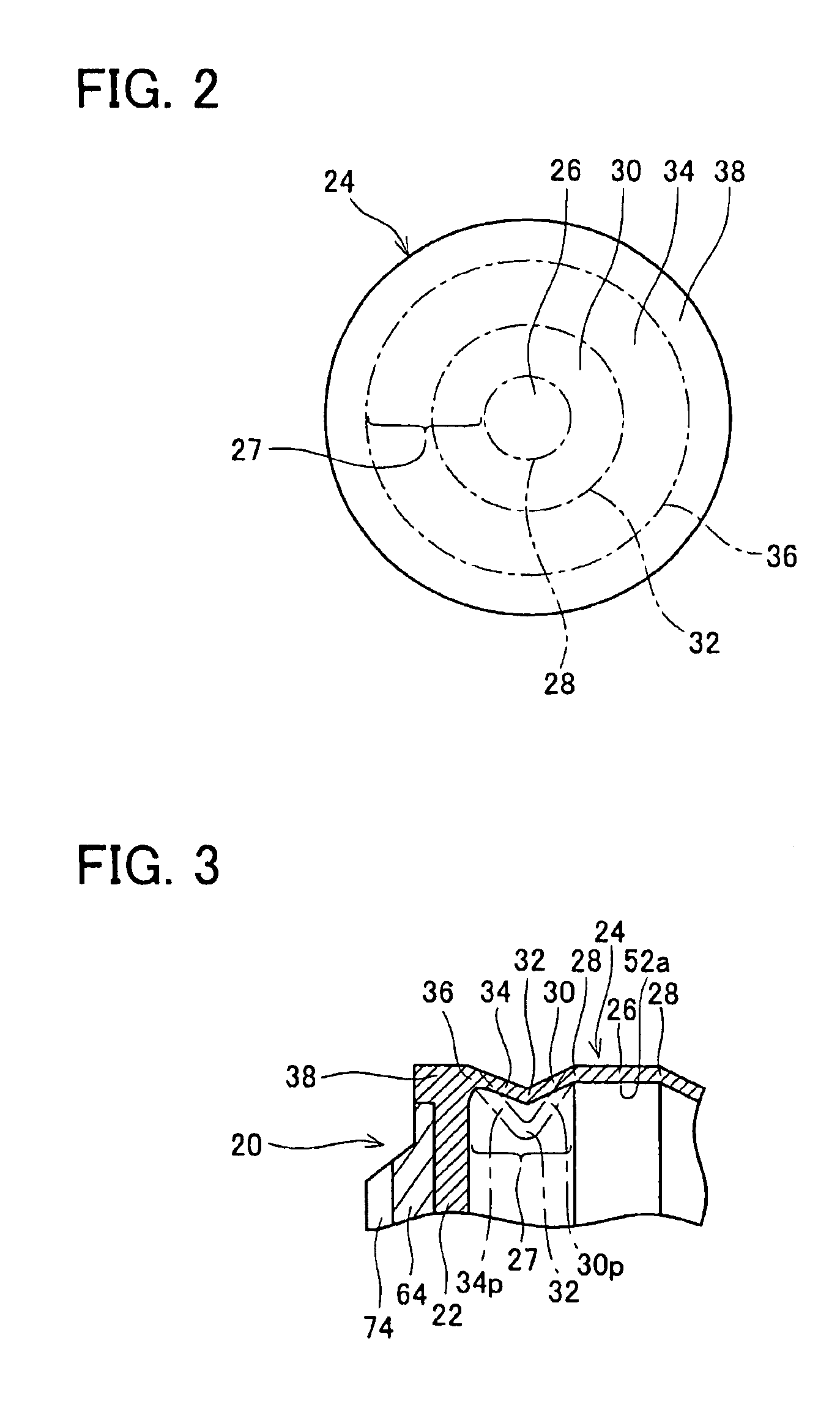Pressure sensor
a technology of pressure sensor and pressure sensor, which is applied in the direction of fluid pressure measurement, machines/engines, instruments, etc., can solve the problems of excessive pressure detection and insufficient reduction of output error of sensor element b>54/b>, and achieve the effect of suppressing the reduction of pressure detection accuracy and suppressing the change in relative positions of diaphragm and force transmitting member
- Summary
- Abstract
- Description
- Claims
- Application Information
AI Technical Summary
Benefits of technology
Problems solved by technology
Method used
Image
Examples
first embodiment
FIG. 1 shows a cross-sectional view of a pressure sensor of the present invention. The pressure sensor is provided with a housing 20, a diaphragm 24, a force transmitting rod (a force transmitting member) 52, a sensor element 54, etc. The upper side in FIG. 1 is defined as the anterior end and the lower side is defined as the posterior end. FIG. 2 shows a plan view of the diaphragm 24 of the pressure sensor, and a supporting portion 38 of the diaphragm 24. The pressure sensor is used, for example, by being attached to an engine block (not shown) of an internal combustion engine. The pressure sensor has a wide detecting range and can detect a high pressure of a combustion gas (combustion pressure) and a low pressure of an admission vacuum.
The housing 20 has an outer housing 64 and an inner housing 22. The housing 20 is formed in an approximately cylindrical shape. The axial direction of the housing 20 is the up-down direction of FIG. 1. A threading portion 74 is formed on an outer ci...
second embodiment
(Second embodiment) FIG. 5 is a cross-sectional view showing a pressure sensor of the invention. In the pressure sensor, an inner housing 22 is formed separately from a diaphragm 24 and a diaphragm supporting portion 38. The inner housing 22 is formed of metal having a thermal expansion coefficient smaller than that of the diaphragm 24. Specifically, the diaphragm 24 is made of stainless steel, as described above, whereas the inner housing 22 is made of covar. Further, the force transmitting rod 52 formed of ceramic, and the sensor element 54 made of silicon, etc. have a thermal expansion coefficient smaller than that of the stainless steel diaphragm 24.
Furthermore, it is preferred that the inner housing 22 and the force transmitting rod 52 are made of materials having an approximately identical thermal expansion coefficient. Moreover, it is preferred that the thermal expansion coefficient of the inner housing 22 and the thermal expansion coefficient of the force transmitting rod 52...
third embodiment
(Third embodiment) In a third embodiment diaphragm 24b, as shown in a cross-section in FIG. 6, folded portions 30b and 34b formed in a surrounding region 27b are formed in an inverted V-shape. The folded portions 30b and 34b are configured such that they extend from an inner edge 28b of the surrounding region 27b towards the housing 20, and are folded at a location that is further upwards than the inner edge 28b. In the cross-section, as shown in FIG. 6, the folded portions 30b and 34b are approximately symmetrical.
In other terms, the folded portions have an inner inclined portion (third region) 30b and an outer inclined portion (fourth region) 34b. The inner inclined portion 30b extends from the inner edge 28b of the surrounding region 27b towards the joint 32b between the inner inclined portion 30b and the outer inclined portion 34b, and is inclined upwardly. The outer inclined portion 34b extends from the joint 32b towards the outer edge 36b thereof, and is inclined downwardly. T...
PUM
| Property | Measurement | Unit |
|---|---|---|
| force | aaaaa | aaaaa |
| pressure | aaaaa | aaaaa |
| thermal expansion coefficient | aaaaa | aaaaa |
Abstract
Description
Claims
Application Information
 Login to View More
Login to View More - R&D
- Intellectual Property
- Life Sciences
- Materials
- Tech Scout
- Unparalleled Data Quality
- Higher Quality Content
- 60% Fewer Hallucinations
Browse by: Latest US Patents, China's latest patents, Technical Efficacy Thesaurus, Application Domain, Technology Topic, Popular Technical Reports.
© 2025 PatSnap. All rights reserved.Legal|Privacy policy|Modern Slavery Act Transparency Statement|Sitemap|About US| Contact US: help@patsnap.com



